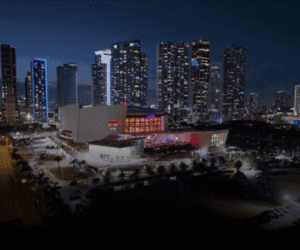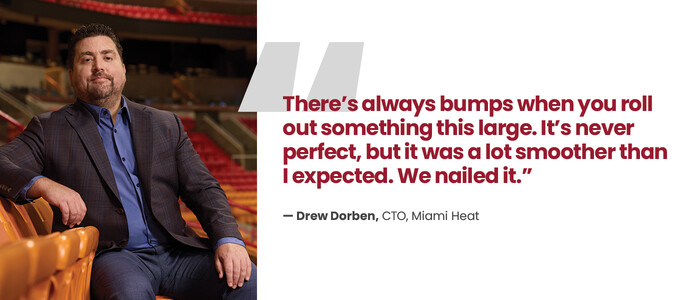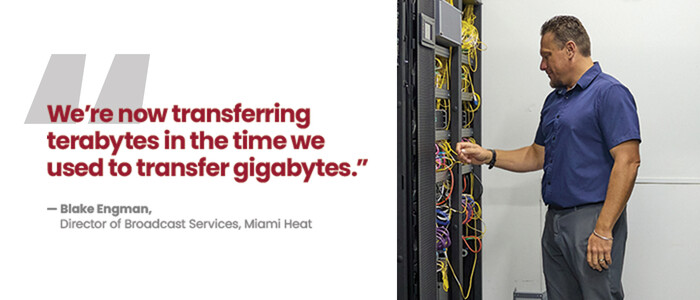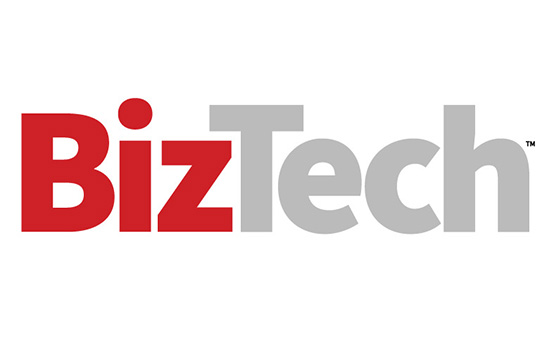Miami HEAT Bolsters Security with Next-Generation Firewalls
With the new broadcast network complete, the HEAT in 2024 strengthened network security. When two firewalls protecting the public Wi-Fi network reached end of life, the team saw an opportunity for a strategic upgrade.
Dorben and his team purchased two high-end, next-generation firewalls to safeguard its corporate and broadcast networks, then repurposed the still-current corporate/broadcast firewalls to secure the public Wi-Fi network.
“We bought beefy ones for the corporate and broadcast networks because we needed them,” Dorben says. “They inspect the packets faster. We’re able to monitor traffic a lot quicker. The public Wi-Fi doesn’t need as much horsepower.”
While the corporate and broadcast networks are separate, they meet at the firewall layer, where both networks are protected by the new pair of firewalls. They operate in an active-active configuration to ensure best performance and redundancy, he says.
The new firewalls protect two in-house data centers, one for corporate needs and the other for broadcast production. Meanwhile, the separate public wireless network, made up of 300 wireless access points, needs its own set of firewalls to ensure up to 19,500 fans have secure internet access, he says.
The HEAT purchased the two new firewalls from CDW, but like the Juniper project, it was a collaborative effort. The HEAT had ideas on what it needed, but it reached out to its existing firewall vendor and CDW for their recommendations, CDW’s Bettor recalls.
DISCOVER: Why a cyber resilience strategy is crucial for business success.
CDW acts as a vendor-neutral consultant, always putting its customers’ interests first, Bettor says. If a vendor’s proposal doesn’t fit what a customer needs, CDW steps in with different recommendations. However, the firewall vendor’s proposal perfectly aligned with the HEAT's requirements. After vetting everything, “we were aligned with what the vendor proposed. That made it a very cohesive pitch to the HEAT,” Bettor says.
CDW leveraged its strong relationship with the firewall vendor to negotiate the best possible pricing for the HEAT on both the equipment and licensing, Bettor says.
The same CDW partner that installed the broadcast network also installed the firewalls. Implementation went smoothly, Dorben says. CDW even delivered the firewalls one week early. “We got a chance to get a jumpstart on the project,” he says.
Overall, the firewalls serve as an integral component in the HEAT’s multi-layered defense strategy, blocking hackers, ransomware, malware and other cyber threats, Dorben says. The organization is moving toward a zero trust security posture — and firewalls enable this capability.
“When you are basically the front door of an organization, you need to be able to detect threats, monitor traffic, enforce access controls, and in today’s world, move towards a zero-trust architecture,” Dorben says. “The more feature-rich and powerful your firewalls are, the more capable you’ll be able to stay safe and operate smoothly in a very unpredictable world.”
Click the banner below to learn how you can get the same white-glove help the Miami HEAT received.




















